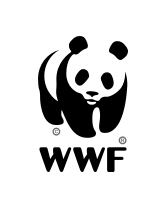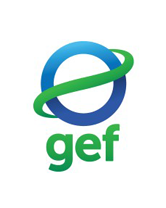Inputs
- None
Deliverables
- Proof of WWF GEF viability
Title
Viability Analysis
Title
Viability Analysis
Text
The table below shows the three categories of indicators of WWF GEF viability: ‘GEF-able’ concept, Enabling Conditions and WWF Fit. These indicators of viability are preconditions for a successful GEF proposal. As WWF Offices discuss and develop an idea with government, these indicators must be met along the way before a proposal (PIF) can be submitted to the government’s GEF Operational Focal Point (OFP) for endorsement and the GEF Secretariat for approval.
|
'GEF-able' Concept |
Enabling Conditions |
WWF Fit |
|
|
|
|
|
|
|
|
|
|
|
|
|
|
|
|
|
GEF-able Concept
- Robust Storyline: the concept has a clear storyline in terms of the overall objective and a well-defined baseline of work by WWF, government and others, and how the proposed project would leverage from that foundation to generate incremental outcomes and global environmental benefits.
- Alignment with national policies and strategies: demonstration that the concept meets government priorities, through alignment with key national policies and strategies. For example, the WWF GEF Integrated Land Management project in Nepal is highly aligned with the government’s Terai Arc Landscape strategy and with the government’s landscape conservation approach.
- Alignment with GEF priorities: the concept is eligible under the GEF programming directions and will directly contribute to the objectives of one or more focal areas.
Government Support
- Government buy-in:
- Likelihood of Operational Focal Point endorsement once in PIF stage - the concept requires formal endorsement from the OFP. In the concept stage, the team should have early discussions with the OFP office to understand whether there is support to allocate STAR to the concept. Before the OFP signs the formal endorsement letter, they will likely discuss with the relevant technical department/ministry as well as with the relevant national convention focal point to ensure they are supportive.
- Engagement from technical departments - country ownership of a concept is a requirement for any GEF project. In addition to having endorsement from the OFP, staff from technical line departments should be engaged in the development of the concept as early as possible in order to ensure full government ownership. In many cases, one of these technical departments may be the executing agency for the project, therefore developing a strong working relationship with these staff early on in the process helps ensure successful project design.
- Alignment with national policies and strategies: demonstration that the concept meets government priorities, through alignment with key national policies and strategies. For example, the WWF GEF Integrated Land Management project in Nepal is highly aligned with the government’s Terai Arc Landscape strategy and with the government’s landscape conservation approach.
- STAR (country allocation) or set aside funds (for global or regional projects, or top-up) available: Availability of GEF funds, either through STAR or through set aside funds, should be checked with the OFP and/or the GEF Secretariat.
WWF Fit
- Ability to contribute to the design of a project or program – Staff time—within national offices, global practices, etc.—and financing is needed for project development and coordination. Consider: Who is needed to move the project forward, what percentage of their time should be allocated to the project, what are the costs of moving the project forward, and can these costs be covered?
- Strong working relationship with government – in cases where governments do NOT have an informal policy/track history of exclusively working with one of the other GEF Agencies (eg. UNDP), a good working relationship between the local WWF office and government, especially the Operational Focal Point (OFP), can predicate successful design of a WWF GEF project, as governments are the beneficiaries of GEF funds and have to own the concept from an early stage.
- Contributes to/aligns with Global Practices and country priorities – Much like the concept must align to government priorities, it should also align to WWF Global Practice priorities (Areas of Collective Action and Innovation or High Impact Initiatives) as well as the local WWF office priorities (for example, as outlined in their Strategic Plan).
The intersection of these priorities – GEF Strategic Directions, government, WWF Global Practices, WWF country office – is the ‘sweet spot’ for a WWF GEF project.

